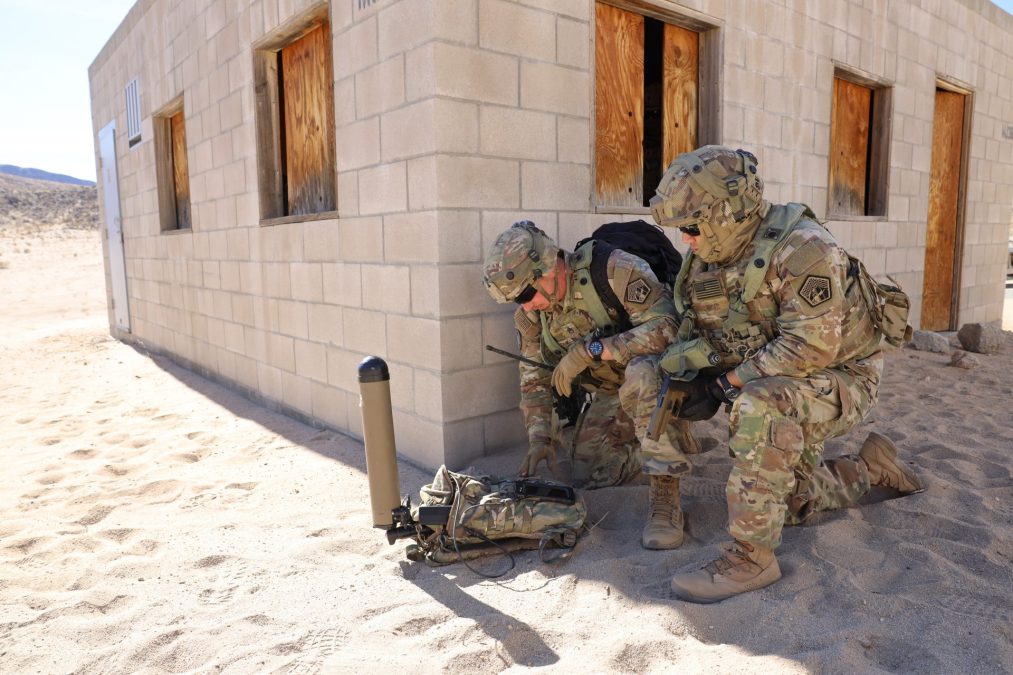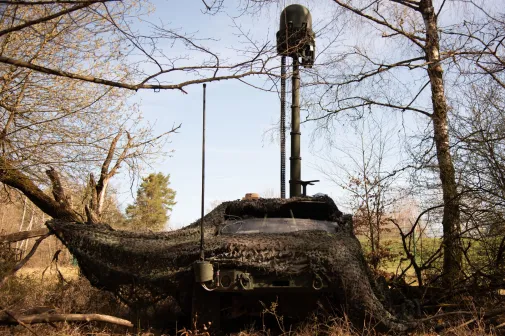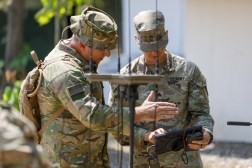Here’s how the Army is working to get electronic warfare gear to units faster

AUGUSTA, Ga. — The Army is using unit experimentation and smaller buys with the aim of fielding electronic warfare equipment to units faster.
Since the Cold War, the Army divested much of its EW capability. In that time, adversaries such as Russia and China have significantly invested in these systems and tactics, causing concern among top U.S. defense officials.
The Army has struggled for the past 10 years or so to field electronic warfare equipment, especially jammers. Just a few years ago, it added a program-of-record jammer to its arsenal for the first time in over a decade.
Now, in an attempt to buy more commercially available systems rather than exquisitely developed ones, and get additional capabilities to soldiers, the service wants to leverage ongoing experimentation.
“We buy small quantities early and that’s what we take to the field. In some cases, we take a little bit … to the lab, but the focus is not to buy it, put it through the production lab line. Instead, we just take it up to the field,” Col. Scott Shaffer, project manager for EW and cyber within program executive office for intelligence, electronic warfare and sensors, said in an interview at the TechNet Augusta conference Tuesday regarding how the Army is trying to get capabilities fielded faster.
“The old way in doing business … is you define everything up front, and then you take two, three, four years to build it … and you test it to the nth degree. You just put so much energy and time and money to do this, whereas the whole time we had nothing in the field. I think with the experiments and the prototyping, we can get early solutions out there, in some cases, if that’s good enough, then let them use it. I think it’s just a quicker way,” he added.
Shaffer described the new approach as essentially “free testing,” where officials can get capabilities to users early, test them and receive constructive feedback as opposed to just iterating in the lab or with a vendor.
As part of this ongoing experimentation, the program office, which buys and fields the equipment, and the Army capability manager, who develops the requirements, have been working in greater lockstep with one another.
Shaffer noted that he and his counterpart on the requirements side, Col. Leslie Gorman, are spending more time interfacing with units and soldiers to ensure they’re moving quicker.
The Army’s transforming-in-contact initiative, using troop rotations and exercises to inform how to better equip and purchase, is forcing the entire service to move faster to field the latest tech to soldiers.
“It requires us [to] iterate on the requirements as well because technology advances so quickly. It behooves us, as the user represented, to stay on top of really what the … operators need to be successful in the field,” Gorman said of how the TiC process is changing how requirements are generated.
The bottom-up innovation of solider-led initiatives through TiC has helped the requirements community speed up its work and open its eyes to potential new operational concepts.
For example, brigades within the 101st Airborne Division under their own volition, built electromagnetic spectrum decoys using commercially available raspberry pi’s strapped to small drones at a cost of hundreds of dollars — a fraction of the price tag of typical military gear.
Those systems were used to great effect against enemies in training scenarios, forcing the opposing units to expend valuable munitions on the wrong targets and reveal their positions.
“We’re also revolutionizing our electronic warfare. Simple, inexpensive decoy emitters that cost roughly about $100 each, we are already deceiving the enemy, drawing them towards false signals and wasting [their] valuable resources,” Maj. Tyler Johnson, executive officer for 1st Battalion, 187th Infantry Regiment, 3rd Brigade Combat Team, 101st Airborne Division, told TechNet Augusta attendees Tuesday. “One recent example, we saw the enemy forces chasing strange SSIDs believing their equipment was malfunctioning when they found no friendly forces at the locations … Deception masked the true location of the command post, causing the enemy to expend 40 percent of their classified resources or ammunition on a medical node and not on a C2 node, saving the commander’s ability to continue to control the fight.”
While those systems were successful in those training environments, Gorman noted that they likely won’t be adequate against sophisticated adversaries given the signal complexity in large-scale operations.
As a result, the Army is developing a specific requirement for decoys that is more robust and can stand up to the battlefield and spectrum conditions. The observations of soldiers in the dirt using their imaginations have provided the requirements community unique insights.
Gorman said her team recently worked with a brigade of the 101st to bring out a few vendors to test decoy prototypes and compare them to what the unit built on its own previously.
“That helps us with our requirement, … that also helps inform our conversation with the PM,” she said. “We’re at a point now where being able to engage in the TiC units in this manner, especially during experimentation and working alongside the PM at the same time, we’re approaching the problem from the same side of the table. That helps shape the requirement with the specificity, hopefully, that I think the PM needs.”






